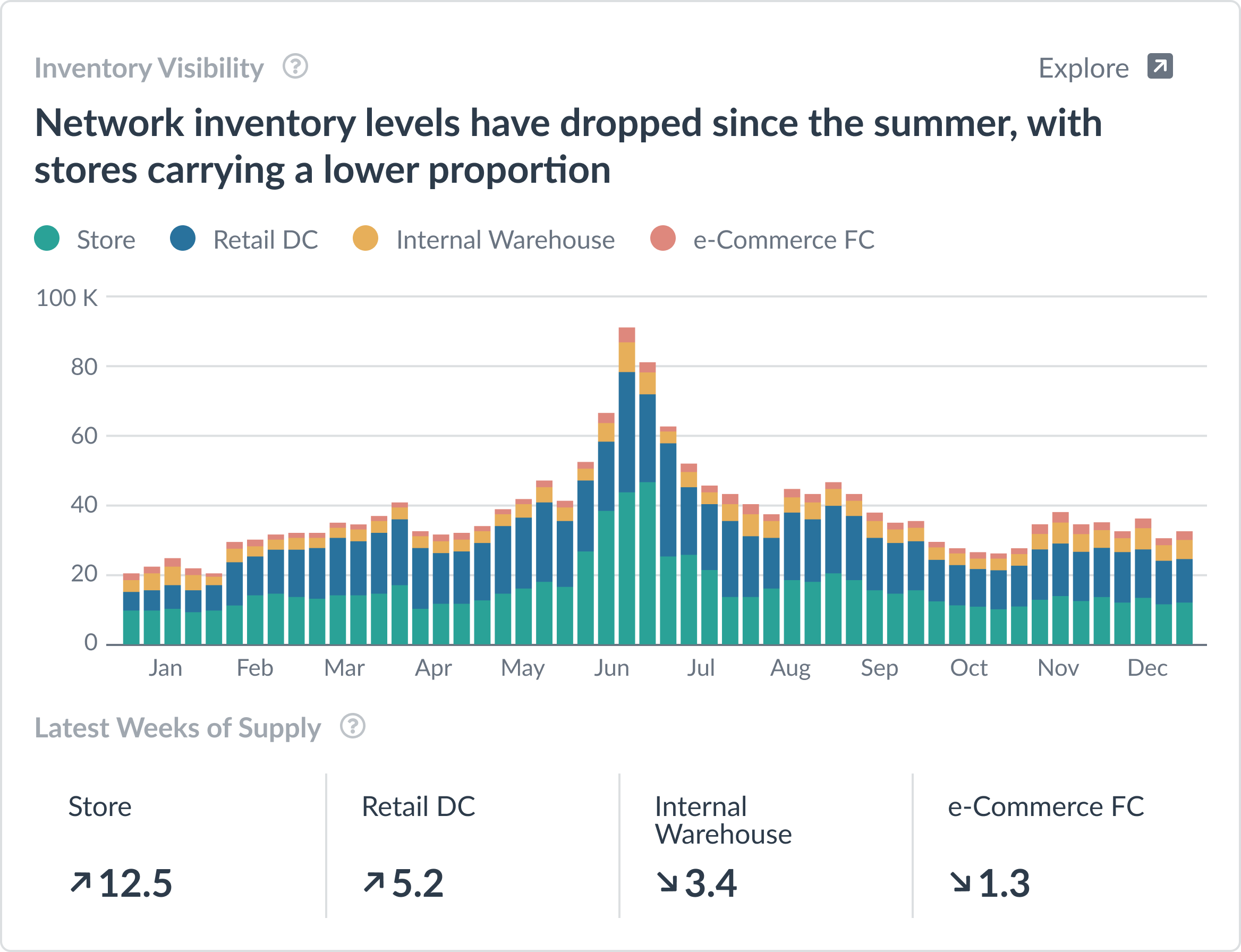Identify upcoming inventory shortages or excess supply with advanced simulations

Inventory Visibility in Alloy.ai
- Get visibility beyond your own warehouse - Monitor inventory levels and trends with real-time visibility across your network and your retailers’ and distributors’ networks.
- View inventory at a macro and micro level to see trends and isolate issues - Start with a network-wide view of your inventory and drill down to specific locations to get increased data granularity to diagnose issues.
- Plan better with a clear understanding of in-channel inventory - Improve order and shipment plans with a clearer understanding of in-channel inventory.
- Make better allocation decisions to boost sales - Ensure you prioritize sending product to the customers that need it most to avoid lost sales and maintain retailer relationships.
- Take action where it’s needed - Understand where to direct your time so you can focus on what matters immediately.
Questions you can answer with Inventory Visibility in Alloy.ai
- Which products and locations are at risk of stock-out in the coming days or weeks?
- How many weeks of supply do I have for key products at key locations?
- Are open orders sufficient to meet demand?
- Where is supply low or out of stock?

Transforming customer relationships with a proactive supply chain
“I now have visibility to three layers of the supply chain instantaneously, coming in every morning. I can be very, very proactive and prepared further up my supply chain.”

Eric Rossi, Sr. Director of Supply Chain
Trusted by 100s of Consumer Brands

Inventory visibility at your fingertips
Get Started
Frequently Asked Questions
How does Alloy.ai integrate data from multiple sources into its platform?
Alloy.ai connects with over 350 pre-built data sources, including retailers, e-commerce platforms, distributors, 3PLs, and ERPs. It automates data collection regardless of format—be it flat files, APIs, EDI, or Excel spreadsheets—ensuring seamless integration of both external partner data and internal systems.
In what ways does Alloy.ai harmonize disparate data to provide a unified view of sales and supply chain?
The platform automatically normalizes data by creating unique signatures for each SKU, translating product IDs across different partners, and managing unit-of-measure conversions. It also maps product flows through the network, tagging locations for geographical analysis, and overlays events like promotions or product launches on relevant SKUs and time periods.
What predictive analytics capabilities does Alloy.ai use to anticipate supply chain challenges?
Alloy.ai employs AI-powered predictive simulations and forecasting engines to create forward-looking views of the supply chain. It provides metrics that predict future states, such as projected weeks-of-supply and inventory on-hand, helping brands anticipate stockouts and predict demand.